
Activity: new directions
Exploring a potential business opportunity
Background
This activity is part of a series of activities that begins with the activity 4 university friends. Originally we discussed how the 4 friends had a ‘catch up’ and discussed how their careers were progressing – in the process we learned that they all work for organisations with different structure and how some are involved in strategic and tactical tasks whilst some are purely tactical. Then we followed Neil and his experience at a business forum where he met Maddison and Frank and how they are now exploring a new business venture. The new business should bring Maddison’s expertise as a consultant with the ‘big-end of town’ to small-medium businesses.
Two weeks after the small-medium business forum, Neil receives a text from Maddison. ‘Neil are you available for a coffee and a chat about business’. Intrigued, he suggests the coffee shop near his office.
Over a coffee, Madison states that she has recently returned to work after maternity leave and has been doing a lot of thinking. Rather than consult with the big end of town she wants to work in the small-medium business sector. And after the panel forum she suspects that there is a gap in the market and wants to explore if there is a market in the gap. Furthermore, she now questions whether working for a large consultancy is good for her, her child, or her relationship with her partner.
She has been considering that maybe she and Neil could combine their expertise and start a new ’boutique’ business consultancy. The target market would be small and medium business – looking for finance, management, and marketing advice. Part of process would be to help small-medium business owners – to undertake the CADDIE business planning process.
Neil, laughs and suggests she downloads an updated version of themarketingconcept [e-book]?
Maddison asks if Neil is willing to explore the business proposition further. To which Neil agrees. He adds that a more scientific approach to business planning would assist his clients, I feel to make this work we would have to develop our own business planning process – our own intellectual property – we need to be able to document the process before we can market our services.
One month later
It is now one month since Maddison’s business proposition and in that time Neil and Maddison have discussed an outline of the business planning process and are developing the documentation. The marketing audit to collect the COMP factors and determine the attractiveness of a market and the organisation’s ability to compete in the market is almost complete.

The financial, strategic and communication objectives are critical to conducting a marketing audit, a business plan, a strategic marketing plan, and the implementation and evaluation of the tactical marketing action plans. Achieving the stated objectives, both qualitative and quantitive, will require careful measurement and management. A closer inspection of the COMP slides below will reveal that the objectives are primarily within the cOmp [i.e., Organisation], however, are also to some extent in the other COMP factors.
What is also important is that an organisation’s focus hierarchy of marketing objectives importance will depend on the nature of the product, the market and the organisation. This means that in some organisations communications [for example] may have different weight. Furthermore an individual employee’s focus on marketing objectives will depend on how [the tasks] they are individually measured [KPIs]
This diagram provides an overview of the philosophy and the objectives outlined in this process. Although an organisation will adopt the marketing concept the situational factors they face will demand that the organisation crafts a unique business/marketing philosophy. And whilst the broad marketing objectives will apply they will also be crafted to suit the prevailing COMP factors. With time this philosophy will nurture a culture. This will be reinforced throughout the business/marketing planning process.
This diagram shows the entire CADDIE business-marketing planning process. The marketing audit proforma relates to the COLLECT and ANALYSE stage. The diagram shows where the Marketing Audit Report and SWOT presentation would be located.
The above diagram shows how the business-marketing plan involves different people during the strategic business plan, the strategic marketing plan and the tactical marketing action plans. If you refer to the activity: 4 university friends catch up you may be able to determine how it varies according to the size, structure, and complexity of the organisation.

The above images show how the people involved in the various components of the business-marketing planning process. Clearly the size and complexity will demand that the process will become more involved as the size, structure, and complexity of the business increases..
Neil and Maddison have also discussed the business proposition with Frank [who is basking in the older mentor role]. Frank feels that the idea has merit and worthy of further exploration and to call on him at anytime and states that he will promote this service to suitable clients.
Neil and Maddison then confide in Neil’s university friends Bernadette, Joseph, and Claire and his girlfriend Sarah. They form an expert focus group to explore the business proposition. They discuss the marketing audit and how the data could be collected by a ‘pro-forma’ and agree to do a little ‘market research’ and meet in one week with feedback.
The findings of their marketing research
- Sarah takes the draft marketing audit ‘proforma’ to her colleagues – they all suggest that it has merit. One of her colleagues, Samantha, sees only one hurdle. Samantha believes that many small business owners will not have the self-esteem to permit an outsider to critically evaluate their business and adds that if that issue is managed carefully and the cost are reasonable then it will be a worthwhile process – the others agree.
- Bernadette applies the draft marketing audit pro-forma to her organisation with her MD. He thinks that it is useful, thought provoking and a good first step in the business planning process. However, her MD felt the cost of collecting information could be reduced if the pro-forma was available on-line [some time in the future]. The MD feels that by checking certain boxes the pro-forma could be self-modifying. This could change the document according to the COMP factors.
- Joseph realises that his organisation is global and too complex for a marketing audit pro-forma. To assist Neil, he takes the draft marketing audit proforma to Sam [the marketing manager of an automotive retailer – you may remember Sam from the activity: price and pricing and the product life cycle]. Sam thinks that a marketing audit pro-forma is an excellent tool, although it does bring back ghosts of ‘marketing assessments past’. Sam thinks that being generic there are some questions that may need to be modified/tailored for B2B and B2C and maybe for specific industries/organisations. Sam said that if there was an actual business example or testimonial that would be beneficial. Sam suggests that if he was to present a task such as this which would incur costs [money, time , and effort] to his Dealer Principal then an applied example and an indicative ROI would be required.
- Claire is conscious that her organisation is too complex and that Neil and Maddison will target small-medium business owners. Claire works through the draft marketing audit pro-forma with her customer/friend, Julie, the manager of an independent supermarket. Julie thinks the draft marketing audit proforma is very helpful as it highlights areas she had never considered. Julie felt that ‘she is busy working in her business and a document such as this could provide guidance as to where she should focus and she would then be able to work on her business on a daily basis’. Claire passed on that Julie would have benefited if the proforma had explained what the concept to be explored was, then briefly described why the concept was important to manage and how the concept was to be measured. [everyone agreed that the what-why-how was important]. Maddison felt that Claire had identified a great idea as often business owners lack an understanding of the language of marketing and their consultancy needed consistency if and when different consultants were administering the marketing audit proforma – they needed to manage variability.
- Joseph then suggested that, if this new consultancy is based on communicating the value of a rigorous [CADDIE] business planning process; then Neil and Maddison need to be able to demonstrate the ROI to future clients.
- Claire agreed and stated that after conducting the draft marketing audit pro-forma with Julie it became evident that every business [B2B or B2C] needs to identify and nurture a unique product value proposition [UPVP] and then communicate how their product is distinctive, discernible, and desirable.
- Bernadette [who now has empathy for Maddison and her desire for work-life balance] puts forward the view that because Neil’s business was already well established; then the new consultancy was relatively low risk – new product – existing market [see Ansoff] as initially it could target Neil’s existing clients [providing an augmented service] and in time broaden its reach. Bernadette felt that this initiative would provide business owners with a more scientific way of managing and reduce managing by ‘gut feeling’.
- Joseph mentioned how he read a LINKEDIN post that suggested that organisations were likely to be an amalgam of different business concepts – that it would be unlikely that a business, even if it was a small-medium business, would have 100% of the employees committed to a marketing philosophy. The others agreed – Sarah then asked do you think that the degree that an organisation has knowledge of the marketing concept and has adopted the marketing concept should be measured? ‘WOW’ said Neil I think that may even be the starting point.
the next step
Neil states that after listening to his friends – the business proposition has merit, he felt that all the comments were insightful. He now recognised that there is a need for foundation questions to enable the consultant to understand the philosophy of the organisation; including the degree to which an organisation has adopted the marketing concept and is practicing a marketing philosophy. Joseph said these are important first steps in a marketing audit and would set the tone for the business-marketing planning process and he added that at this point it could be that you identify organisations that would be a poor fit for the consultancy.
Maddison adds ‘Firstly, we need to clearly define what the characteristics of each of the business concepts [the production concept, the selling concept, and the marketing concept]; next explain why this information is so important to the overall CADDIE process; and then how we intend to measure the degree that the organisation has adopted the marketing concept.’ Neil agrees ‘we can’t assume they our client know what the marketing concept is.’
Once again, they sit down to outline the steps in the CADDIE business marketing planning process.
This time Sarah takes the lead – although she has no intention of leaving her present position – she feels that it would be a long-term investment in her relationship with Neil – if she demonstrates an interest + she feels it needs fresh eyes.
After several hours of brainstorming, Sarah who has been taking notes, summarises their work:
Undertaking the marketing audit
- Cover page [with Marketing Audit – authors of the document – a place for who conducted the audit]
- Table of contents [the word document needs to be formatted to show a hierarchy of importance]
- Overview of CADDIE process – [methodology; details the process – includes a statement of purpose]
- Foundation Questions
- Explanation of the 3 business approaches & identification of the organisational characteristics
- Identifying the present position [organisational philosophy, mission statement, and raison d’etre]
- Explanation of the situational factors [COMP factors] that require attention
Collect and Analyse
- Customer audit [explore the customer characteristics that a marketing practitioner must consider – customer considerations]
- Organisational audit [explore the organisational characteristics that a marketing practitioner must consider – organisational considerations]
- Market audit [explore the market characteristics that a marketing practitioner must consider – market considerations]
- Product audit [explore the product characteristics that a marketing practitioner must consider- product considerations- quality, value, satisfaction, +]
Template for Marketing Audit Report
- Executive summary
- Overview of the marketing audit process [methodology]
- Presentation of data [COMP factors]
- Conclusions [the findings of the marketing audit – including the market attractiveness and the organisation’s ability to compete in the market]
Template for SWOT Presentation
- A template to present the Strengths, Weaknesses, Opportunities and Threats facing the organisation
- What is internal and external – what should be maximised or minimised
The strategic business planning is presented with the discipline audits [including the marketing audit], then meets and decides the direction for each discipline. This is outlined in the business plan which is presented to the chief officer in each discipline.
Template for the business plan
- Executive summary
- The statement of strategic intent
- The situational analysis [a synthesis and summary of discipline audits]
- The organisational objectives
- quantitative & qualitative
- Overview of the discipline plans
The business plan is then presented to the senior discipline practitioners for consideration and planning. Each discipline will then craft their discipline plan, however, to achieve organisational objectives input from other disciplines is critical. Let’s look at the marketing plan.
Template for the marketing plan
- The executive summary
- The statement of strategic intent [as articulated in the business plan]
- Situational analysis [prevailing and forecast COMP factors]
- The organisational objectives [articulated in business plan and the strategic intentions]
- The marketing objectives
- quantitative & qualitative
- Overview of the relevant action plans [expressed in broad terms and elaborated in the various action plans]
The marketing plan is then presented to mid-level marketing practitioners for consideration and planning of the various discipline action plans. Each marketing business unit will then craft their business unit action plans, however, to achieve organisational objectives input from other disciplines is critical. Action plans can be ‘everyday action plans’ and/or ‘as needed action plans’.
Template for marketing action plans [completed after the marketing plan has been crafted and agreed]
- Title: The title should identify the activity, who is involved, and the parameters
- Organisation philosophy: This should be included to provide guidance to employees at all levels
- Marketing objectives: In broad terms provide a statement of purpose; an overview of what the action plans hopes to accomplish. Describe the specific strategic marketing objectives that the action plan addresses
- Financial objectives: This would detail the increase in sales revenue, how it reduces costs as a percentage of sales, build the value of the business
- Processes: the processes should be detailed and include a flow chart[s] of how the actions will be implemented and the sequence of events. The process for reporting of deviations should also be outlined.
- Roles and responsibilities: identifies who is responsible for implementing the action plan [this could be a person, an organisation, a team, and may involve channel parties] and who is ultimately accountable for reviewing performance and advising the CMO of any deviations from design.
- Timeline: identifies the various milestones that need to be achieved and in what time period. It is common that a marketing action plan has a shorter life than the marketing plan or business plan therefore timeframes – who does what and by when.
- Budget: itemises how much has been budgeted for the implementation of the action plan. This should include a breakdown of costs.
- Collection and analysis: what information is needed post implementation. The how, when, and with what frequency of collection and analysis. Who will analyse the information and who is responsible for distribution of information. Often a weekly report will be presented to the CMO for synthesis and communicating with the strategic planning group.
- Evaluation of sales performance metrics
- Volume, $ value, month, YTD, previous year, margins
- Associated costs,
- Av. sell price, prices exceptions,
- Market share, territory, department,
- Salesperson performance, conversion rates,
- Lead times,
- Customer satisfaction by product/salesperson
The next day Frank rings Maddison to tell her that he has been chatting with Robyn, the SMB forum organiser and how in the conversation he mentioned this new venture and asked Robyn for her thoughts. Frank then stated that Robyn feels that it is a ‘valuable service to small-medium sized businesses’. PLUS – Robyn is also willing to provide the names and contact details of attendees from the previous small-medium business forum if Neil and Maddison agree to be panel members at the next small-medium-business forum. Frank states that Robyn also requested that Neil and Maddison email an overview of their process and the benefits of this service to small-medium business owners and she will promote the next SMB forum and their new organisation on the SMB platform.
Maddison states ‘I feel I have reached the point of no return – tonight I will have the final talk with my partner, then tomorrow I will resign from the company and then start working on this new consultancy that helps small-medium businesses to plan for their future.’
Neil states ‘I really feel that we are making progress and identifying the areas we should explore – I think if we have explanatory notes – what – how- why – it will ensure that regardless of whoever conducts the business planning process we will be consistent. From a marketing point of view I believe the COMP questions will enable our clients to better understand the market attractiveness and their ability to compete. The templates will ensure consistency across all our clients. This information will certainly make the business-marketing planning process more effective and efficient and it will, in time, enable comparisons and bench marking to be conducted.’
Maddison states ‘Excellent we are really getting somewhere. Let’s take a break and have a coffee and a muffin.’
Tasks
- If you were to take on the role of Maddison and respond to Robyn’s request for information – what would be your key points and how would you describe this process in say 200 words
- How would the business-marketing planning process differ according to the size of the organisation?
- Would you consider the documentation and the templates the intellectual property of the organisation? If so – what steps would you recommend to protect their intellectual property?
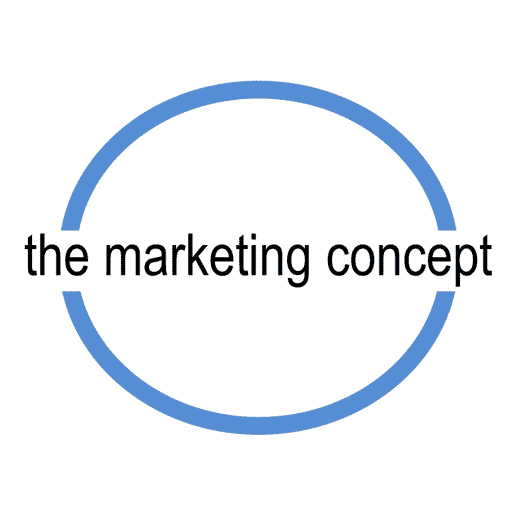
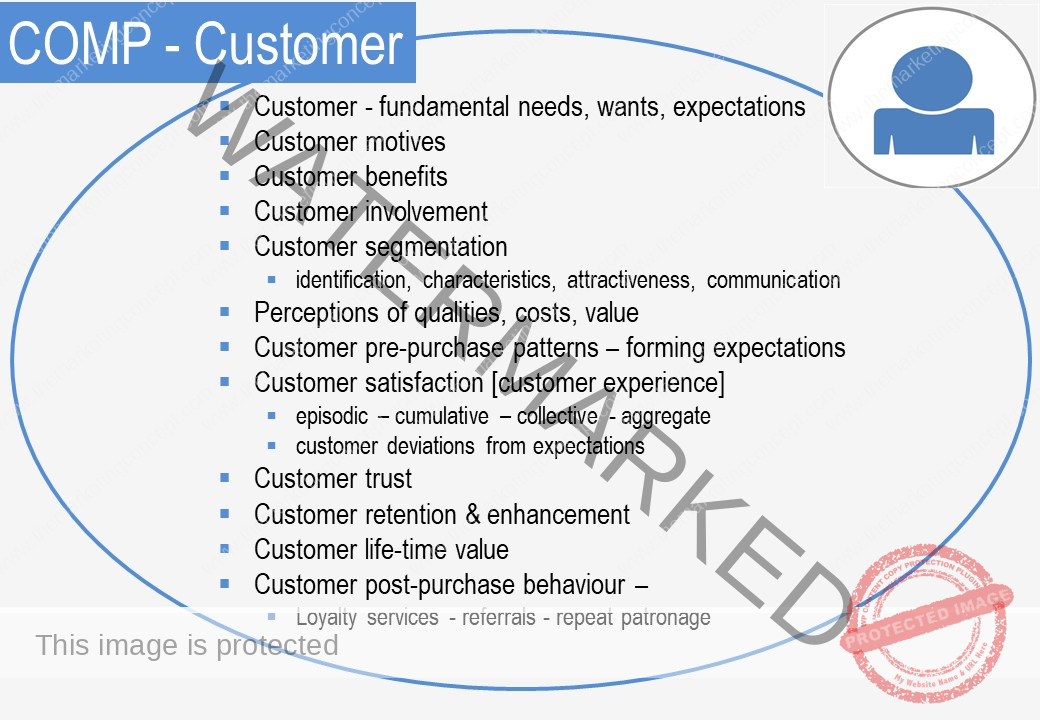
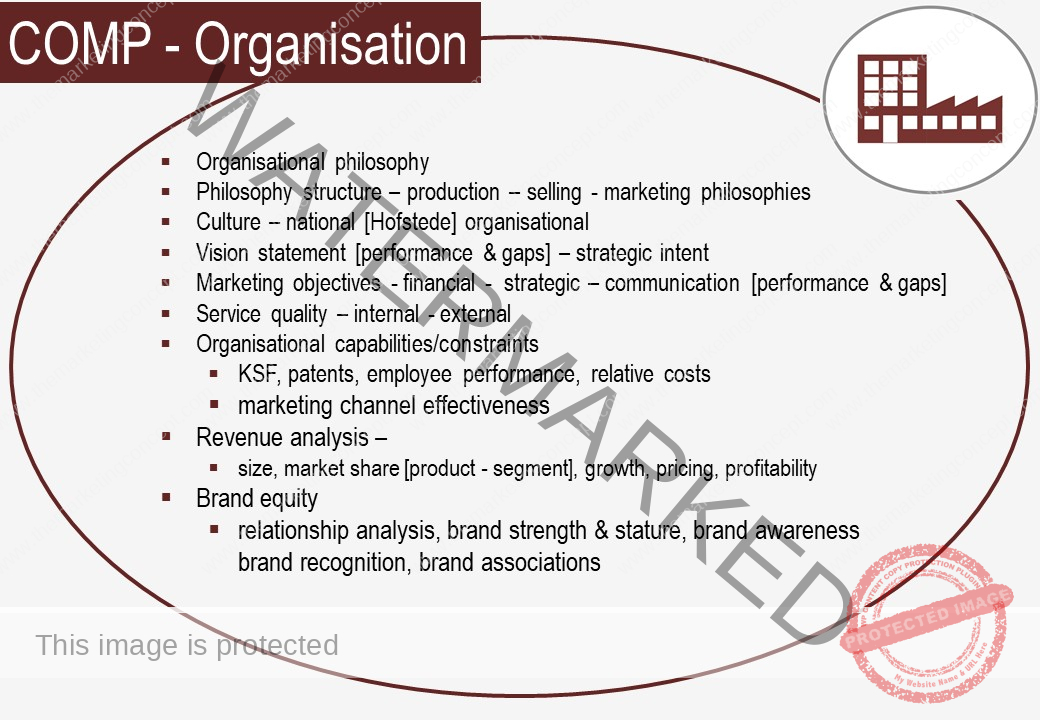



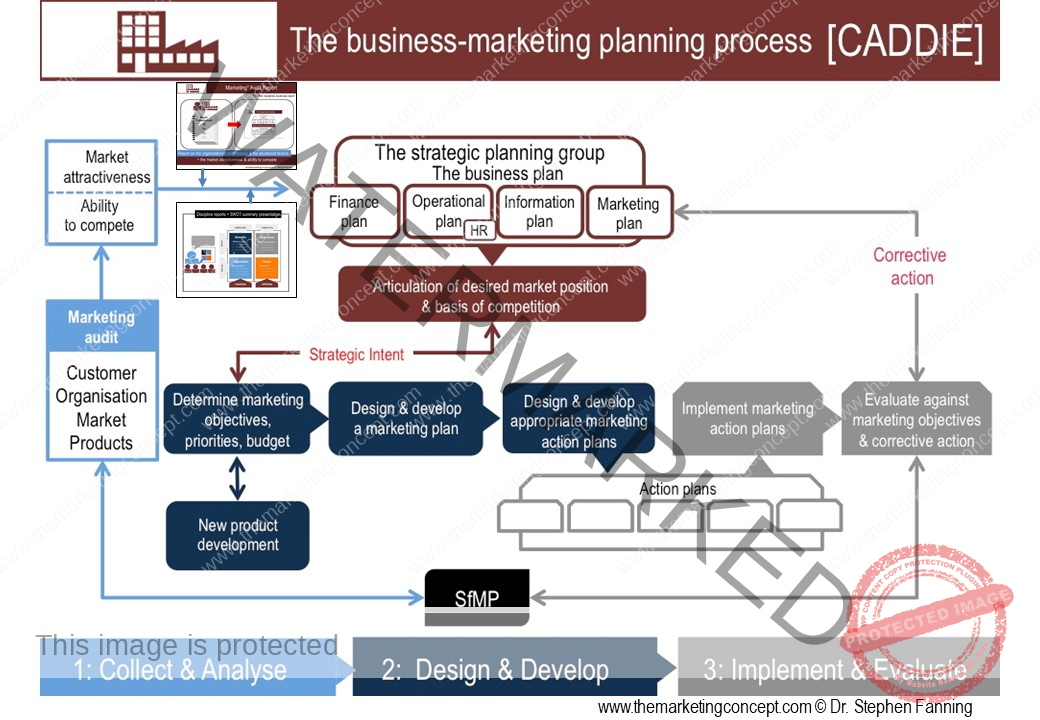
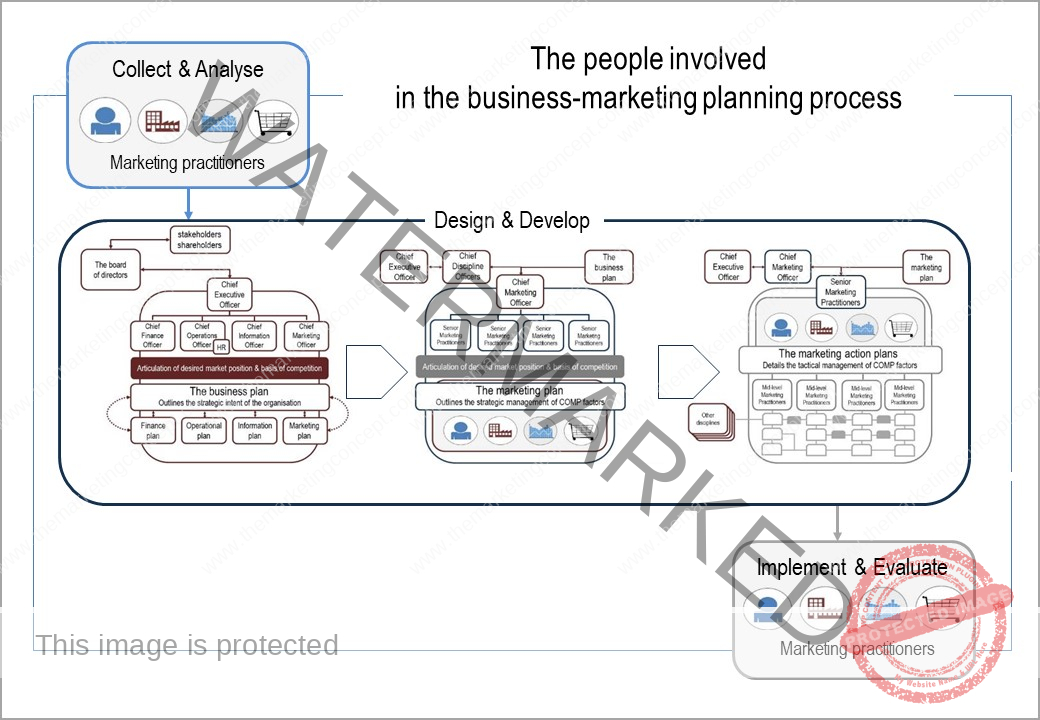


![Key slides for assessment 2 [click]](https://www.themarketingconcept.com/wp-content/uploads/2023/06/Key-slides-for-assessment-2-click.jpg)